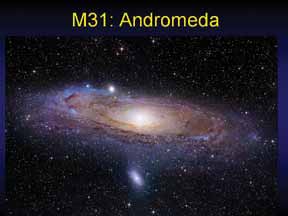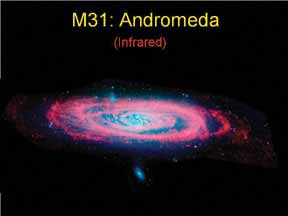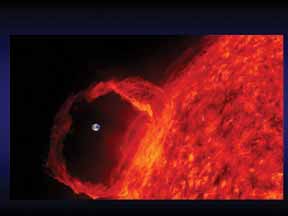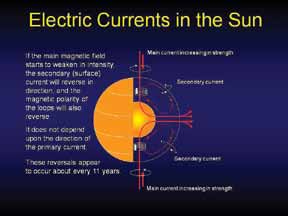We all have seen articles on the “missing matter” of the universe, and there continue to be substantial efforts to identify—or explain—this “dark matter,” or “dark energy” that has eluded astronomers attempting to understand the reality in which we find ourselves. It may come as an astonishing surprise to dis-cover that much of what we have been taught about astronomy is fiction based upon errors.
We are all victims of the myths of our times; however, it is shocking to discover that this myopia can also include our “scientists” as well as the uneducated and uninformed! Let’s explore some of the myths of astronomy, along with their typical astrophysical explanations:
• “There is invisible dark matter in that galaxy.” (Otherwise we cannot explain how it rotates the way it does.)
• “96% of the universe is made up of dark energy and dark matter we cannot see.” (Otherwise clusters of galaxies would fly apart because gravity alone can’t hold them together.)
• “There is a black hole in the center of that galaxy.” (Otherwise we cannot explain its level of energy output.)
• “Pulsars are made up of strange matter.” (Otherwise we can’t explain their oscillator-like behavior.)
• “Photographs of connections between two objects that have different redshifts1 are simply chance alignments.” (Otherwise the Big Bang is falsified!)2
We will discover that these conceptions derive from a gravitational perspective, and a blindness to the implications of the electromagnetic phenomena which is overlooked or ignored by the uninformed. To deal with these issues, it will be essential to first gain a grasp of the relative distances involved.
The Burnham Model
Robert Burnham, in his Celestial Handbook,3 takes advantage of a useful coincidence: The number of inches in a statute mile (63,360) is approximately equal to the number of Astronomical Units in one light-year: (63,294). The distance from the Sun to Earth is defined as an Astronomical Unit (AU). In Burnham’s suggested model of the universe, one inch represents the distance from the Sun to the Earth; one mile represents one light-year. This is remarkably helpful in attempting to grasp the relative distances in astronomical discussions. In Burnham’s model, the Sun would be represented by a speck .009 inches in diameter, about the size of the period at the end of this sentence. (880,000 mi./93,000,000 mi. = .009 in.) All planets with their orbits could thus be represented within a 7 ft. diameter circle:
– Mercury 0.4” radius
– Venus 0.7” radius
– Earth 1.0” radius (1 “AU”)
– Mars 1.6” radius
– Jupiter 5.2” radius
– Saturn 9.5” radius
– Uranus 19.2” radius
– Neptune 30.0” radius
– Pluto 39.5” radius
In the Burnham’s model, our Milky Way galaxy would be 100,000 miles in diameter! The nearest star, Alpha Centauri (the same size as the Sun and 4.5 light years away), would be represented by a comparable speck 4.5 miles away in the model!
The provocative question is, How much influence would gravity have on two tiny specks 4.5 miles apart? Remember, in Newton’s law of universal gravitation, the gravitational force is the product of the two masses, divided by the square of the distance between them! Gravity could hardly be relevant here.
Astronomers explain their conjectures relying on the 17th and 18th century tools of their forefathers, Kepler and Newton: gravity, fluid mechanics, and the magnetism of loadstone, rather than incorporating those of the 19th century—Michael Faraday, James Clark Maxwell and electromagnetic field theory, and totally ignoring the discoveries of Kristian Birkeland, Irving Lanmuir, Hannes Alfvén, and Anthony Peratt of the 20th century.
As you may recall from our Briefing Pack, Beyond Perception, the electromagnetic forces between two electrically charged objects can be 1,000,000,000,000,000,000,000,000,000,000,000,000 times as great: 1036, that is, 36 orders of magnitude! (Not only in at-traction, but in repulsion as well.)
The Plasma Universe
There are four states of matter in the universe: solid, liquid, gas, and plasma. As we add energy to a solid, it turns into a liquid: ice melts into water. If we add enough energy to a liquid, it turns into a gas. If we add enough energy to a gas, the molecules disassociate into positive and negative ions, a state of matter known as “plasma.” Over 99% of the matter in the universe is in the form of plasmas, and it is the electrical behavior of plasmas that results in the peculiar phenomena we observe throughout the celestial sky.4
Plasmas take on one of three modes: dark, glowing, and arc. When the energy levels are low, they remain in a dark mode: they do not give off light. When the energy levels are sufficient, they exhibit a glowing mode—such as is observed in a fluorescent light or neon sign. In the sky, we also see this in auroras and comet trails, etc. When the energy levels are sufficiently high, plasmas exhibit an arc mode, such as is observed in lightning, or in electric welding.
 The fundamental behavior of electric currents and magnetic fields were codified by James Clark Maxwell (1831 – 1879), which still remain as the foundation of the electrical and electronic engineering sciences. The interactions of the electrostatic and electromagnetic forces in plasmas result in their unique behavior as a composite body with a very distinctive character. Their behavior is very “non-intuitive,” since the forces involved are orthogonal (“perpendicular”) to their fields.
The fundamental behavior of electric currents and magnetic fields were codified by James Clark Maxwell (1831 – 1879), which still remain as the foundation of the electrical and electronic engineering sciences. The interactions of the electrostatic and electromagnetic forces in plasmas result in their unique behavior as a composite body with a very distinctive character. Their behavior is very “non-intuitive,” since the forces involved are orthogonal (“perpendicular”) to their fields.
In February 1981, eleven years after Swedish electrical engineer Hannes Alfvén won the Nobel Prize in Physics, he published Cosmic Plasma, a book which has been largely ignored by the astrophysics community. Yet our space probes have since confirmed his views: over 99% of the universe is com-posed of electric plasmas, and they obey the same physical laws as small laboratory plasmas do here on Earth. When we examine the various galaxies we see in the sky, we discover that they are electrical in nature. Here is M31, Andromeda, in visible light:
 Here is M31, Andromeda, in infrared wavelengths:
Here is M31, Andromeda, in infrared wavelengths:
One of the most impressive aspects of the plasma view of the universe is that it is empirically based, and that its basic phenomena can be reproduced in the laboratory and in computer simulations.
This plasma perspective is particularly revealing when we explore our nearest star, the Sun. As we examine the Sun, the observed electrical effects are spectacular. And as we examine the solar flares, we clearly recognize the electromagnetic phenomena:
The size of the Earth is shown to an approximate scale, but it is an AU—93,000,000 miles—away). The popular misconception that the Sun is some controlled form of “thermonuclear explosion” ignores the evidence that the Sun is actually a sophisticated electric “light bulb,” drawing its energy from the fields through which it travels.

These diagrams and photos were excerpted from this month’s featured Briefing Package, Beyond Newton, which explores our plasma universe, the “zero point energy” in the fabric of space, and other related topics. Yet, it is the epistemological5 lessons that are the most significant benefit of these studies. The most important impact of these discoveries is to remind us to require empirically based conclusions, and not to become deceived by conjectures which depend entirely upon mathematical models, however elegant or esoteric. Furthermore, it is always awe inspiring to discover that the more one knows about the frontiers of true science, the more comfortable Genesis chapter one reads.
And God said, Let there be a firmament in the midst of the [plasmas], and let it divide the [plasmas] from the [plasmas]. And God made the firmament, and divided the [plasmas] which were under the firmament from the [plasmas] which were above the firmament: and it was so.
Genesis 1:6-7
The KJV renders it “waters”: Don’t let the vocabulary of 1611 derail you-mayim is a dual of a primitive noun (but used in a singular sense); fluids; also of danger, violence, and transitory things (plasmas?). We report; you decide.

Notes:
- Such as galaxy NGC 4319 and its companion Markarian 205.
- Halton Arp was Edwin Hubble’s assistant; a long-time observer at the Mt. Palomar and Mt. Wilson telescopes. His photographs contradict the Big Bang Theory.
- Celestial Handbook, Robert Burnham Jr., Lowell Observatory, 1950-1979, Dover NY, 1978.
- Much of this study was inspired by The Electric Sky, by Donald Scott, Mikamar Publishing, Portland, OR, 2006.
- Epistemology is the study of knowledge, its scope and limits. It attempts to answer, “How do we know?” anything.






